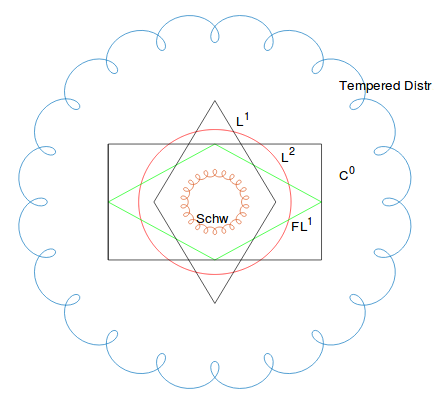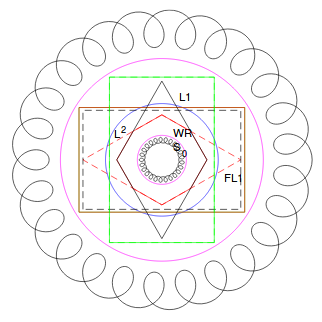I have read somewhere the following very nice intuition about $L^p(\mathbb{R})$ spaces.
This graphic shows a lot of nice relations: 1) There is no inclusion between $L^p$ and $L^q$ 2) $L^p$ is the dual of $L^q$ for $\frac{1}{p} + \frac{1}{q} = 1$, since the boxes have the same shape, but just rotated 3) $L^2$ is self-dual 4) If $p<r<q$ and $f\in L^p\cap L^q$, then $f\in L^r$.
Furthermore, the projections on the two distinct dimensions give us other cases. So while the full two-dimensional picture is the most abstract case $L^p(X,\mathcal{A},\mu)$. The first dimension shows the case of finite measure spaces, the second dimension shows the case of measure spaces which do not have sets of arbitrarily small nonzero measure.
Now perhaps this is just a nice coincidence, and not more. But, and I'm sorry if this question is too vague, is there perhaps any deeper reason or theory which explains this picture?




